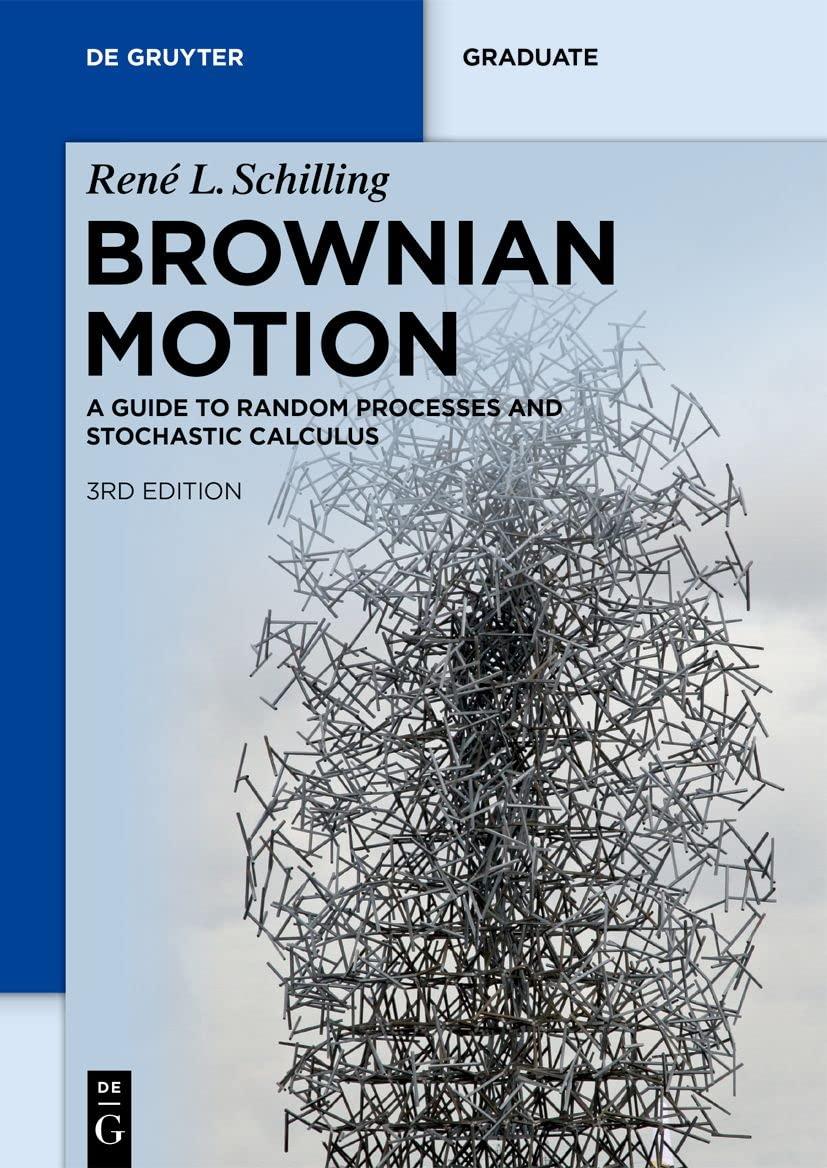For (M, N in mathcal{M}_{T, text { loc }}^{c}) we define the covariation by (langle M, Nangle_{t}:=frac{1}{4}left(langle
Question:
For \(M, N \in \mathcal{M}_{T, \text { loc }}^{c}\) we define the covariation by \(\langle M, Nangle_{t}:=\frac{1}{4}\left(\langle M+Nangle_{t}-\langle M-Nangle_{t}ight)\). Show that
a) \(t \mapsto\langle M, Nangle_{t}\) is well-defined, of bounded variation on compact \(t\)-intervals (BV-process).
b) \(\langle M, Nangle\) is the unique BV-process such that \(M N-\langle M, Nangle \in \mathcal{M}_{T, \text { loc }}^{c}\).
c) \(\langle M, Nangle_{t}=\) ucp \(-\lim _{|\Pi| \downarrow 0} \sum_{\Pi}\left(M_{t_{i} \wedge t}-M_{t_{i-1} \wedge t}ight)\left(N_{t_{i} \wedge t}-N_{t_{i-1} \wedge t}ight)\).
d) \((M, N) \mapsto\langle M, Nangle\) is bilinear.
e) \(|\langle M, Nangle| \leqslant \sqrt{\langle Mangle} \sqrt{\langle Nangle}\).
Step by Step Answer:

Brownian Motion A Guide To Random Processes And Stochastic Calculus De Gruyter Textbook
ISBN: 9783110741254
3rd Edition
Authors: René L. Schilling, Björn Böttcher





